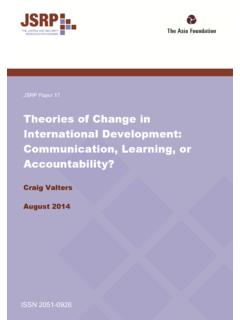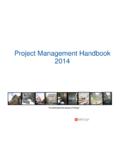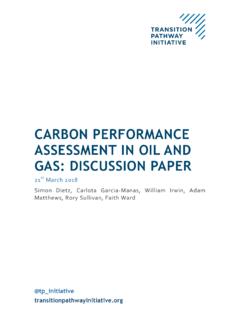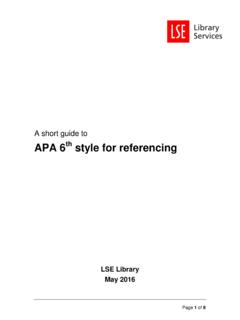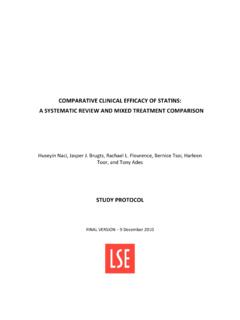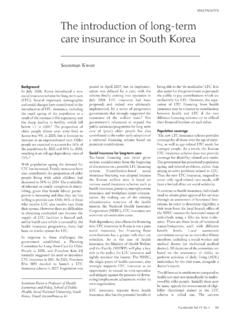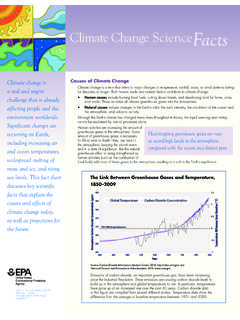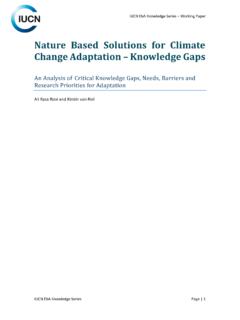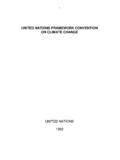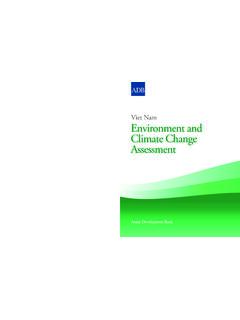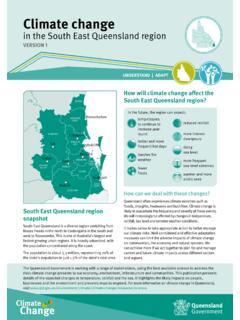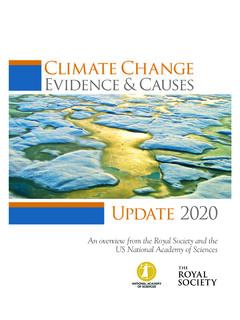Transcription of Global trends in climate change litigation: 2021 snapshot
1 Policy reportGlobal trends in climatechange litigation: 2021 snapshotJuly 2021 Policy reportJoana Setzer and Catherine HighamThe Centre for climate change Economics and Policy (CCCEP) was established in 2008 to advance public and private action on climate change through rigorous, innovative research. The Centre is hosted jointly by the University of Leeds and the London School of Economics and Political Science. It is funded by the UK Economic and Social Research Council. The Grantham Research Institute on climate change and the environment was established in 2008 at the London School of Economics and Political Science.
2 The Institute brings together international expertise on economics, as well as finance, geography, the environment , international development and political economy to establish a world-leading centre for policy-relevant research, teaching and training in climate change and the environment . It is funded by the Grantham Foundation for the Protection of the environment , which also funds the Grantham Institute climate change and environment at Imperial College London. About the authors Joana Setzer is an Assistant Professorial Research Fellow at the Grantham Research Institute on climate change and the environment .
3 Catherine Higham is a Policy Analyst and Coordinator of the climate change Laws of the World project at the Grantham Research Institute on climate change and the environment . Acknowledgements Joana Setzer and Catherine Higham declare financial support from the ESRC, the Foundation for International Law for the environment and the Grantham Foundation for the Protection of the environment for the submitted work. The authors declare no other relationships or activities that could appear to have influenced the submitted workThe authors thank Lord Robert Carnwath, Professor Stephen Humphreys, Dr Fergus Green, Professor Michael Burger, Korey Silverman-Roati, Dr Francesco Sindico, Dennis van Berkel, Lucy Maxwell, Sarah Mead, and Dr Annalisa Savaresi for their helpful review comments on this report.
4 Our thanks also go to Arnaud Koel for his valuable suggestions, inputs and support. Georgina Kyriacou copy-edited the report with production support from Stevie Shephard. This report was first published in July 2021 by the Grantham Research Institute on climate change and the environment and the Centre for climate change Economics and Policy. The authors, 2021 Permissions requests should be directed to the Grantham Research Institute. Suggested citation: Setzer J and Higham C (2021) Global trends in climate change litigation: 2021 snapshot . London: Grantham Research Institute on climate change and the environment and Centre for climate change Economics and Policy, London School of Economics and Political Science.
5 This policy report is intended to inform decision-makers in the public, private and third sectors. It has been reviewed by internal and external referees before publication. The views expressed in this report represent those of the authors and do not necessarily represent those of the host institutions or funders. Contents Key messages 4 Summary 5 Introduction 8 Part I: Understanding overall trends 10 Overall figures: the when and the where of climate change litigation 10 New cases, 1 May 2020 to 31 May 2021 11 Cases in the Global South 11 Claimants and defendants: the who of climate change litigation 12 Case characteristics: the what of climate change litigation 12 Other climate -relevant cases 16 Strategies 17 Does litigation advance or undermine climate action?
6 18 The relationship between climate litigation and climate -focused laws and policies 20 Building Back Better? climate conditions in COVID-19 responses 21 Part II: Litigation trends in focus 23 commitments: domestic accountability 23 Grounds of argument 26 B. Third-wave litigation and the private sector 27 deeper into the rights-turn in climate litigation 32 next for climate litigation? 35 Conclusion 38 References 39 Appendix 1. Figures representing types of claimant and defendant 43 Appendix 2. Methodology for climate commitments analysis 46 Key messages climate change litigation continues to grow in importance as a wayof either advancing or delaying effective action on climate change .
7 Globally, the cumulative number of climate change -related caseshas more than doubled since 2015. Just over 800 cases were filedbetween 1986 and 2014, while over 1,000 cases have been brought inthe last six years. The number of strategic cases is dramatically on the rise. These arecases that aim to bring about some broader societal shift. Not all strategic litigation is aligned with climate goals. However, notall strategic cases that are not aligned with climate goals aremotivated by an intention to prevent climate action. Litigation that is aligned with climate goals is on balance seeingsuccess and there has been a run of important wins in the last 12months, such as the Milieudefensie v.
8 Shell case. The number of cases challenging government inaction or lack ofambition in climate goals and commitments continues to grow, with37 systemic mitigation cases identified around the world. Cases are targeting a wider variety of private sector and financialactors and there is more diversity in the arguments being used,incorporating, for example, themes of greenwashing and fiduciaryduty. Businesses need to be aware of litigation risk. Three areas to watch in the future are value chain litigation, casesof government support to the fossil fuel industry ( throughsubsidies or tax relief), and cases focused on the distribution of theburdens associated with action, which may be classed as justtransition Summary This report reviews key Global developments in climate litigation over the period May 2020 to May 2021.
9 The primary source for the report is the climate change Laws of the World (CCLW) database, maintained by the Grantham Research Institute on climate change and the environment , which includes cases filed before courts in 39 countries and 13 international or regional courts or tribunals. This data has been supplemented by the United States climate Litigation Database, maintained by the Sabin Center for climate change Law, to provide aggregated Global figures. Overall observations and trends The databases contained 1,8411 ongoing or concluded cases of climate change litigationfrom around the world, as of May 2021.
10 Of these, 1,387 were filed before courts in theUnited States, while the remaining 454 were filed before courts in 39 other countries and13 international or regional courts and tribunals (including the courts of the EuropeanUnion). Cases were filed for the first time in Guyana and Taiwan, as well as the East African Courtof Human Rights and the European Court of Human Rights. While the overwhelming majority of cases identified continue to be cases from the GlobalNorth, the number of climate litigation cases in the Global South continues to grow. Thereare at least 58 cases in 18 Global South Most cases have been brought against governments, typically by corporations, non-governmental organisations (NGOs) and individuals.

